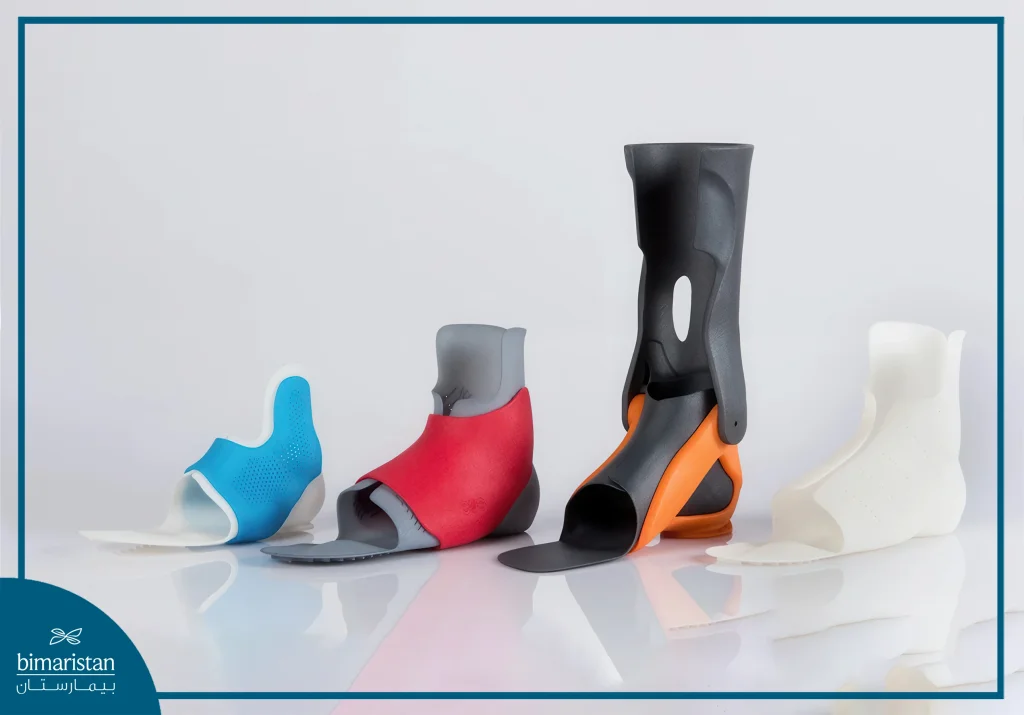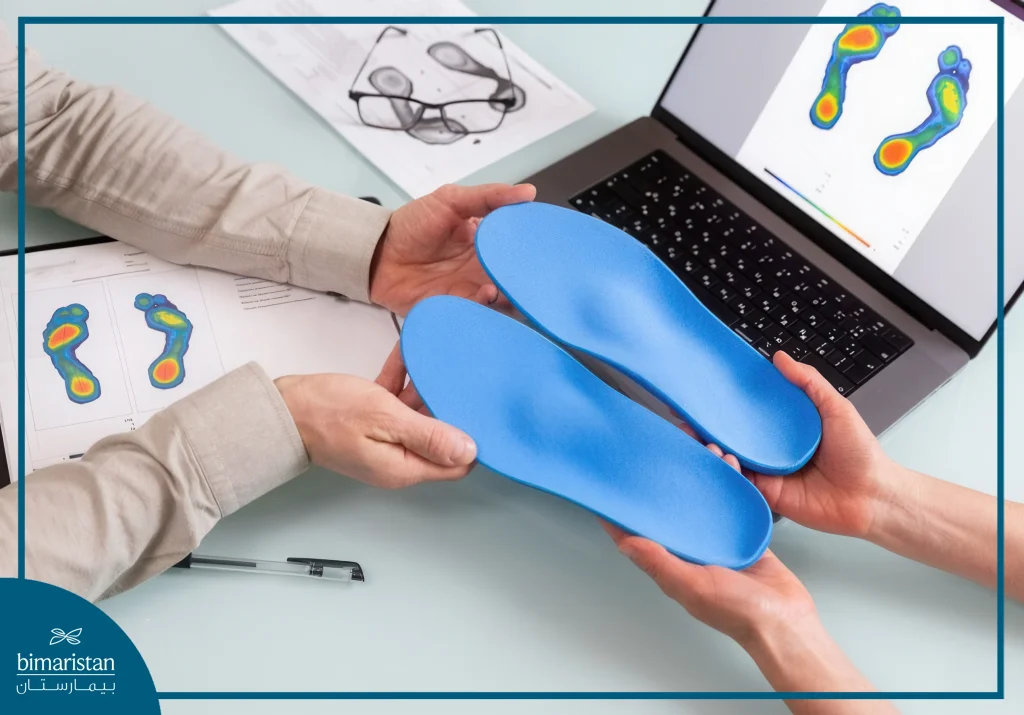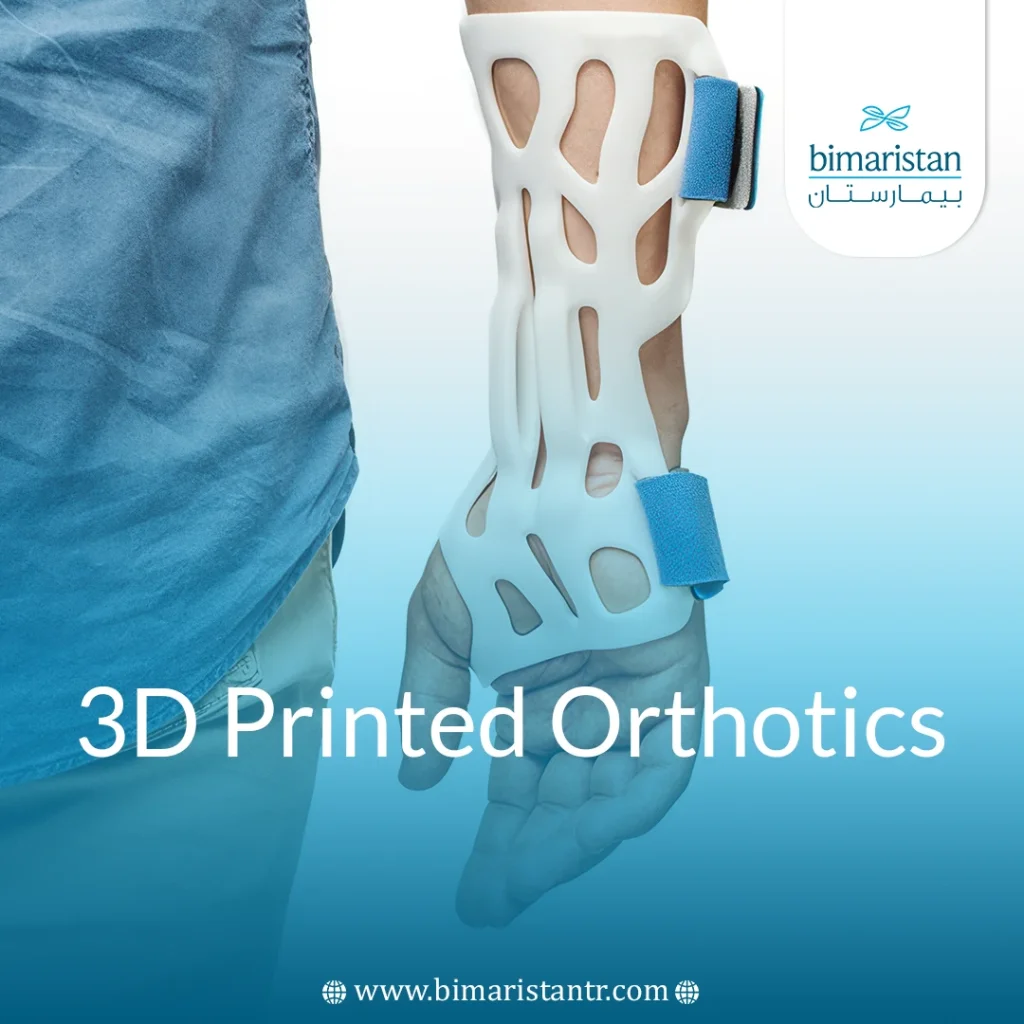With the rapid progress in digital imaging and design techniques, 3D printed orthotics emerged as one of the revolutionary innovations that changed the traditional way of designing and manufacturing orthopedic devices, as initial studies proved the effectiveness of these devices in improving functional outcomes and quality of life compared to traditional orthotics, and with the increasing research and clinical interest in this field, it became necessary to fully study its applied and medical dimensions.
What are 3D printed orthotics?
3D printed orthotics is a modern technology that uses 3D printing to design and make customized orthopedic devices for people with bone and joint issues or musculoskeletal injuries, as this technology relies on an accurate scan of the patient’s body or the affected part, then this scan is converted into a digital model that is used to design an orthopedic device that fits the patient’s anatomical structure, and orthopedic devices are printed with light and durable materials, making the device more comfortable and effective compared to traditional devices.
What devices can be manufactured with 3D printed orthotics?
Through 3D orthopedic technology, the following devices can be designed:
- Braces: Knee, ankle, or wrist braces to stabilize and support joints as they heal.
- Prosthetics: Customized prosthetic limbs, such as a hand or foot, that are printed according to the shape and needs of the patient.
- Splints: To temporarily stabilize broken bones or injured joints.
- Orthotic Insoles: Insoles designed to support the foot and correct gait issues.
- Spinal Orthoses: These are back braces designed to correct deformities such as scoliosis.

How does 3D printing technology work in designing orthopedic devices?
Some of the steps in the digital workflow for designing 3D orthopedic devices may differ, but the basic steps remain the same.
Collecting patient data
The first step in designing custom orthoses is to acquire high-resolution anatomical data using 3D medical imaging techniques. This data can be acquired using a portable 3D scanner, computerized tomography (CT), or magnetic resonance imaging (MRI), after which the data is segmented and converted into digital surface grids that are used in the following design processes.
Generating design
Depending on the use case and personalization strategy, this technology will design a model of the device according to the chosen level of automation, from individual manual design to fully automated patient-matched devices. At this stage, it will also design any customized tools necessary to deliver the device to the patient, and the patient should keep in mind that the design process is as important as the final product because it supports compliance with best practices and medical protocols.
Manufacturing
Additive manufacturing (AM) can be used to produce orthopedic devices directly or indirectly by creating customized tools for the main manufacturing process In general, the direct approach is preferred when creating devices with features that can only be achieved through 3D printing, while economically, the indirect method may be more efficient when producing in large quantities.
Handing over the device to the patient
Because the device is designed to fit the patient’s unique anatomy, fitting the device should be relatively simple, while off-the-shelf orthotics may require adjustment during the fitting process.
Benefits of 3D printed orthotics
3D printed orthotics have several features and benefits that set it apart from other techniques, including:
- Precise customization: The device is designed to precisely conform to each patient’s unique anatomy, enhancing comfort and therapeutic effectiveness.
- Production speed: Significant reduction in manufacturing time compared to traditional methods that rely on manual splints and molds.
- Lightweight and breathable: The devices are printed with lightweight and breathable materials, minimizing perspiration and allowing them to be worn while showering or swimming.
- Reduces costs in the long run: Less material usage and waste, and eliminates the need for several manual stages (such as molding and gluing).
- Easily repeatable and remanufacturable: The digital design is saved, allowing a replacement device to be printed quickly if the original is damaged or lost.
- Design flexibility: Digital models can be easily modified and multiple designs can be tried out without the need for physical prototypes.
- Optimize treatment outcomes: With high fitting accuracy and targeted support, these devices can accelerate healing and improve motor function.
Who are the patients who benefit from 3D printed orthotics?
There are a large number of patients who can benefit from 3D printed orthotics, and some of the conditions that benefit include the following:
- Fracture patients: Especially upper limb fractures, where 3D splints and braces are used to stabilize the fracture in a comfortable and accurate way.
- Patients with scoliosis and spinal deformities: 3D chiropractic is used to support scoliosis and hyperkyphosis, especially in children and adolescents.
- Hand and limb injuries: Such as tendon ruptures or joint injuries, splints are used to hold the joint in a certain position to optimize recovery.
- Patients with cerebral palsy or spinal cord injuries: In the context of the rehabilitation of cerebral palsy patients to provide functional support to the affected limbs and improve posture.
- Flatfoot patients: With 3D orthotic insoles to correct pressure distribution and optimize gait.
- Amputee patients: 3D printing is used to design precisely customized prosthetics to match the amputee’s limb.

The difference between 3D printed orthotics and regular orthotics
The use of digital manufacturing in the production of orthopedic devices significantly reduces the time of product implementation, as traditional processes require molds and splints that are usually made manually by technicians, which makes them slower and less accurate than their digital counterparts. As for costs, digital manufacturing reduces material costs by eliminating the need for some materials and components, as traditional production of orthopedic devices usually involves several intensive steps, such as casting, forming, and gluing, which require expensive materials.
In the case of 3D printing, only the necessary amount of material is used, resulting in significant material savings. Finally, digital manufacturing offers greater design flexibility than traditional methods, allowing designers to make quick adjustments without the need to produce multiple prototypes, and digital workflows can be easily replicated, allowing new patient data to be entered quickly to generate pre-certified designs.
The future of 3D printed orthotics with AI and bioprinting
The integration of 3D orthopedic technologies with artificial intelligence (AI) and bioprinting represents a promising future in specialized healthcare for patients with deformities or disorders of the musculoskeletal system. Modern models rely on the analysis of 3D patient data using AI algorithms to generate accurate and personalized anatomical designs for orthopedic devices with improved predictions of treatment outcomes. Machine learning systems improve device design over time by analyzing thousands of past clinical cases and providing evidence-based solutions.
At the same time, bioprinting techniques are being used in advanced research to produce support structures from biological materials (such as hydrogel or stem cells) that can fuse with damaged bone or cartilage, opening new horizons in regenerative orthopedics. Recent studies indicate the possibility of manufacturing bio-implanted supports that interact with the body biologically and gradually degrade over time.
In conclusion, 3D printed orthotics represent a fundamental development in musculoskeletal care, providing precise and customized solutions thanks to the integration of digital imaging, computerized design, and 3D printing. With the advancement of artificial intelligence and bioprinting, the future is moving towards more efficient and intelligent devices, enhancing the quality of care and speed of response to individual needs.
Sources:
- American Academy of Orthotists and Prosthetists. (2021, July 29). Position statement on 3D printed orthoses and prostheses. In Provision of 3D printed orthoses and prostheses. AAOP.
- Beygi, B. H., & Wong, M. S. (2023, December 22). Contemporary and future development of 3D printing technology in the field of assistive technology, orthotics and prosthetics. Canadian Prosthetics & Orthotics Journal, 6(2), 42225.
